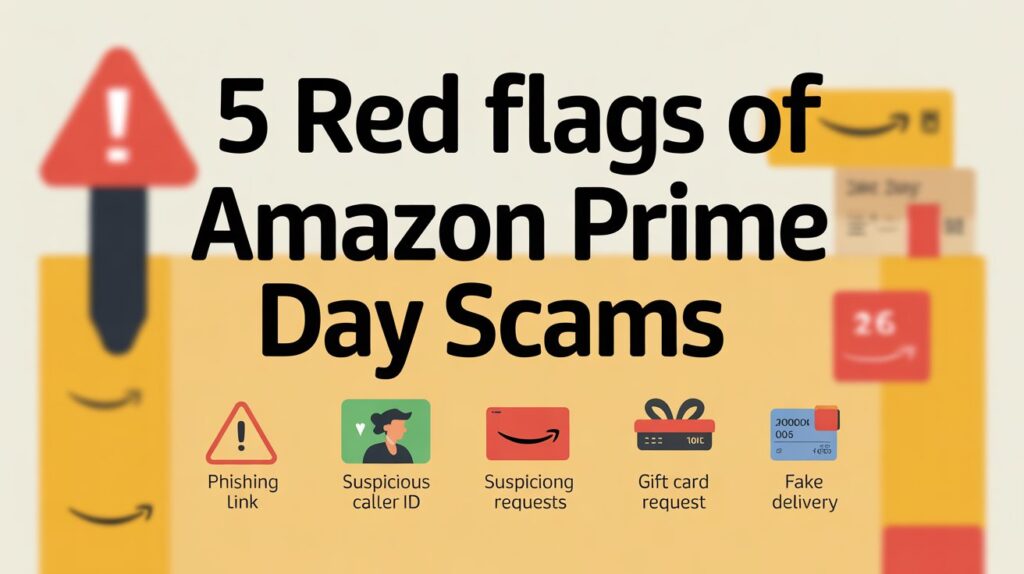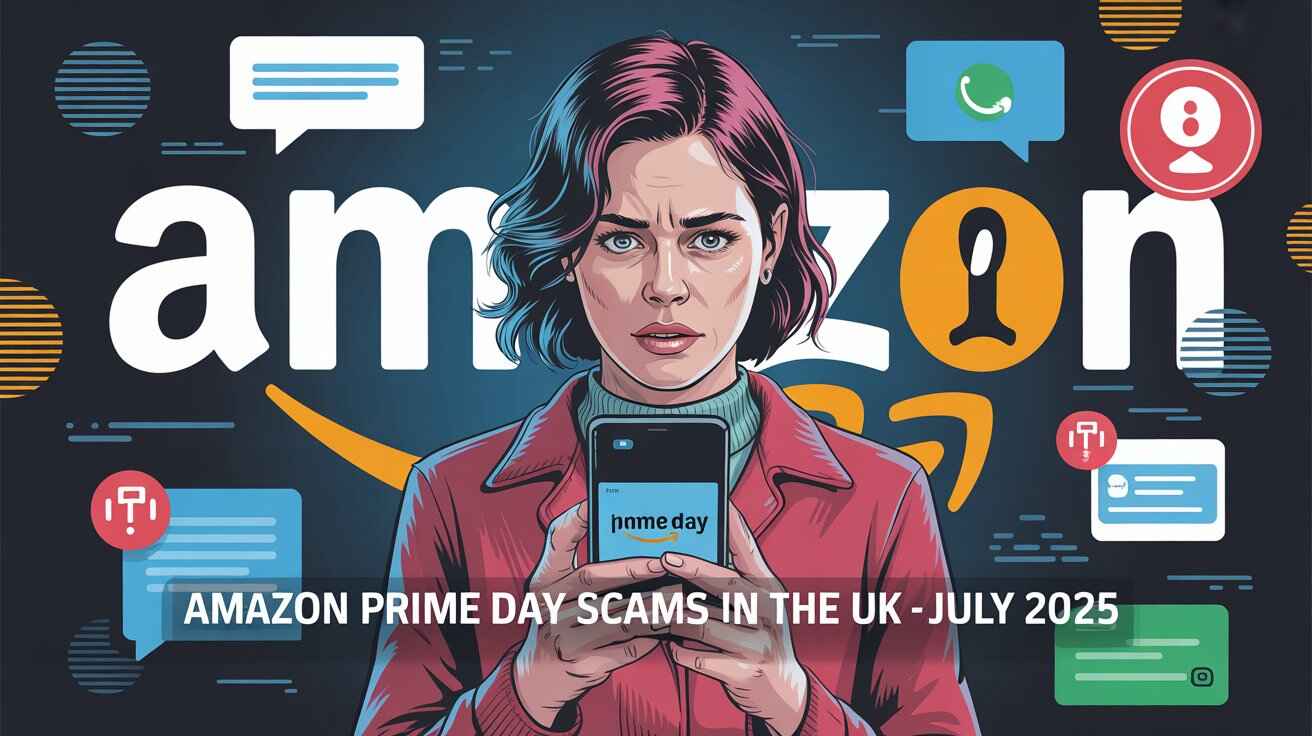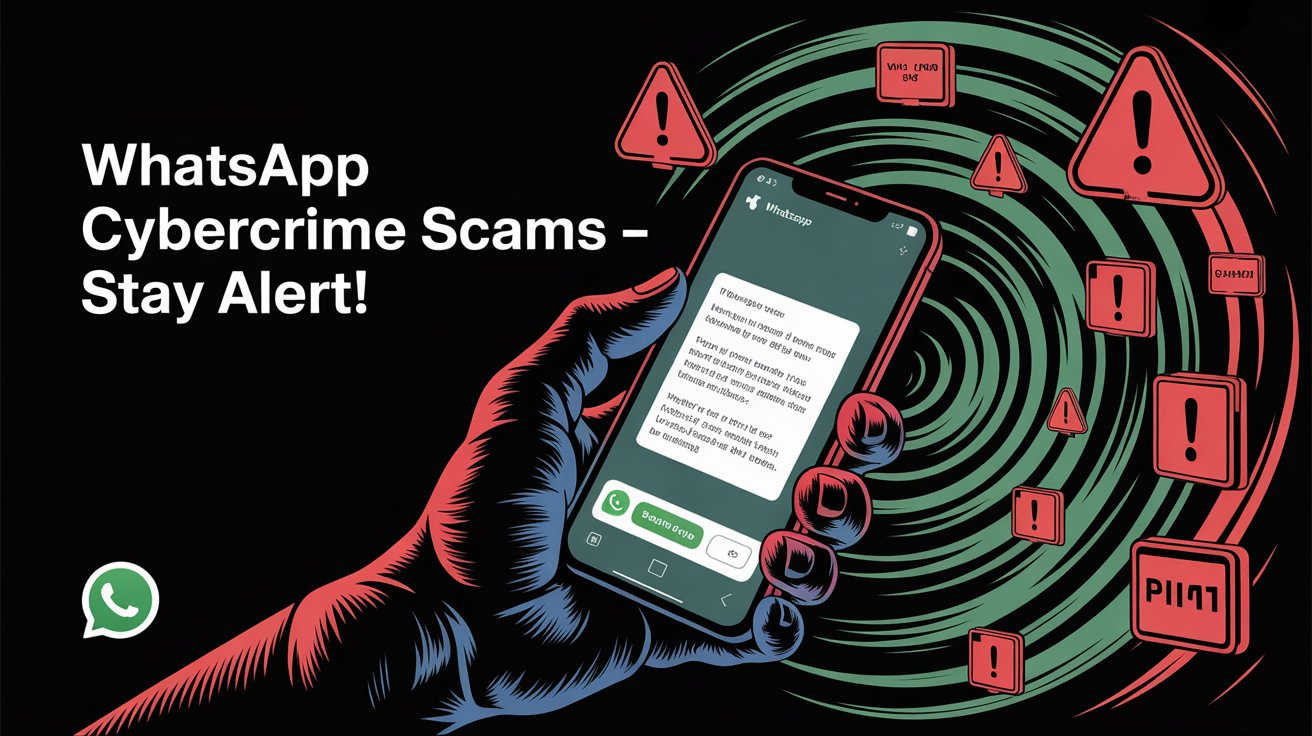Introduction: A Prime Day Nightmare No One Expected
For millions of Brits, Amazon Prime Day is a time to grab exciting deals and exclusive discounts. But this July 2025, the excitement has been tainted by a wave of Amazon Prime Day scams sweeping across the UK. From fake text messages to convincing phone calls, cybercriminals have capitalised on the shopping frenzy — leaving victims anxious, confused, and in some cases, financially drained.
Imagine this: You receive a call saying your Amazon Prime subscription is due for renewal — but you know it’s already paid. Before you can think twice, you’re directed to “verify” your details. Moments later, your bank account is compromised.
You’re not alone.
This blog exposes how these scams work, why they’re rising in 2025, real victim stories, and — most importantly — how you can protect yourself and your loved ones.
What Are Amazon Prime Day Scams?
Amazon Prime Day scams are fraudulent schemes that typically occur during Amazon’s annual Prime Day sales event. Scammers impersonate Amazon via SMS, phone calls, or emails to trick users into sharing personal or financial details.
These scams often involve:
- Fake delivery or account suspension alerts
- Phone calls claiming your subscription is expiring
- Links to phishing websites disguised as Amazon
- Requests for payment or verification
The goal? To steal your data, money, or access your Amazon account.

Why Are They Surging in July 2025?
Amazon Prime Day 2025, which ran from July 16–17, broke sales records across the UK. As usual, users were flooded with emails, push notifications, and texts from Amazon.
Scammers saw this as the perfect camouflage.
According to Action Fraud, the UK’s national reporting centre for fraud and cybercrime, there has been a 43% increase in Amazon-related scams during the first two weeks of July alone.
Key reasons for this spike include:
- High engagement – Millions of people expect texts and calls from Amazon during Prime Day.
- Fast-paced buying behaviour – Shoppers are in a rush, clicking quickly.
- Widespread trust – Amazon is a reputable name, making impersonation easier.
How the Scams Work (With Real Examples)
Let’s break down how these scams operate.
1. The Fake “Amazon Subscription Renewal” Call
You get a recorded call claiming:
“Your Amazon Prime subscription is due for renewal. Press 1 to continue.”
If you press 1, you’re redirected to a scammer posing as an Amazon support agent. They ask for:
- Your Amazon login
- Card details
- Address verification
Victim Insight:
Sarah from Leeds, 52, shared with ScamFreeWorld:
“The call sounded so professional, and I panicked. I gave them my details without thinking. I lost over £400 before I realised.”
2. The SMS Phishing Scam (“Smishing”)
You receive a text like:
📦 Your Amazon parcel is delayed. Click here to reschedule delivery: [link]
The link leads to a fake Amazon login page, where they steal your credentials.
Victim Insight:
Jake, a university student in Manchester:
“I clicked the link and logged in — within minutes my account was hijacked and an iPad was ordered.”
3. The Email Spoof with Prime Day “Deals”
These look like authentic Amazon emails, offering “exclusive Prime Day deals”. The link? A phishing site.
Check the email address carefully:
- Genuine: notifications@amazon.co.uk
- Fake: amazon@pr1meday-discounts.co.uk

Red Flags to Watch Out For
Knowing the signs is your first line of defence. Here’s what to look for:
✅ Urgent tone (e.g. “act now”, “your account will be locked”)
✅ Spelling errors or strange grammar
✅ Suspicious links – hover before clicking
✅ Requests for payment or login via text/email
✅ Unfamiliar email addresses or phone numbers
What to Do If You Receive a Suspicious Message or Call
If you think you’ve received a scam message or call:
- Do not respond.
- Don’t click any links or provide any information.
- Forward phishing emails to:
📧 report@phishing.gov.uk - Forward scam texts to:
📱 7726 (free scam text reporting in the UK) - Report calls or fraud to:
📞 Action Fraud – www.actionfraud.police.uk
Real-Time Tools to Stay Safe
Here are some free tools and apps to help you fight scams:
- Have I Been Pwned? – Check if your email or phone has been leaked.
- ScamAdviser – See if a site is safe.
- TrueCaller – Identify and block scam phone numbers.
- NCSC Suspicious Email Reporting – Helps track scam campaigns.
Amazon’s Official Advice on Prime Day Scams
Amazon UK has issued guidance for 2025:
“We never ask customers to verify payment info or reset passwords via phone or text. Always check your messages inside your Amazon account portal.”
Also, Amazon will never:
- Ask for remote access to your devices.
- Ask for payments via gift cards or cryptocurrency.
- Threaten account suspension for ignoring a call or message.
Visit Amazon’s Help Centre: https://www.amazon.co.uk/gp/help
How to Protect Yourself (and Others)
Here’s a simple checklist to stay scam-free:
🔒 Enable 2-step verification on your Amazon and email accounts
📱 Install a trusted antivirus app on your phone
🔐 Use unique passwords for every site
👁️ Regularly check bank statements
🧠 Talk to family and friends – especially older adults who may be more vulnerable
A Word to the Scammers: We’re Watching
At ScamFreeWorld, we believe education is power. Every time you learn something, share it. Every time you spot a scam, report it. You’re not just protecting yourself — you’re building a community shield.
Let’s make the internet safer, together.
Final Thoughts
The Amazon Prime Day scams in the UK (July 2025) are more than just clever tricks — they’re calculated attacks on your privacy and financial well-being. But with awareness, tools, and a little scepticism, you can stay two steps ahead of scammers.
If you found this blog helpful, share it with your friends, parents, or anyone who shops online.
Read More Blogs – https://scamfreeworld.co.uk/ai-voice-cloning-scam/




